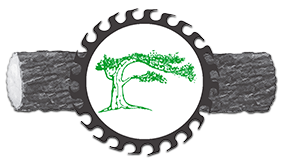Maple Slabs
We start with carefully selected Maple logs from upstate New York. Lumber is stored under cover as it slowly air dries for up to two years. Besides starting out with good quality logs, proper drying is the most important step in quality control.
During the 1700s, a cabinetmaker named Rock manufactured “Rock’s Hard Maple Furniture.” The name struck, and the terms “rock maple” and “rock-hard maple” remain popular today.
For generations, in fact, hard maple has been used for furniture and other items that take abuse: desks, workbenches and butcher blocks, for example.
Twenty-three species of maple grow in Canada and the U.S. They form two broad commercial groups: soft maple and hard, or “sugar,” maple—which is tapped each spring for its sap.
Hard maple flourishes west and south from southeastern Canada and Maine to Minnesota, Missouri, and Alabama. The largest quantities of hard maple are found around the Great Lakes, and Michigan and New York produce the most trees in this country. Soft maple follows the same range, but grows in damper ground–lowlands, swamps, and stream banks.
Maple sapwood has a clean, white appearance, is free from defects, and is typically 3″ to 5″ thick.
These qualities make it more valuable than heartwood, which is uniform in color and runs from light reddish brown to dark brown.
Generally straight-grained with a consistent texture, maple also can have a bird’s-eye or curly (also called fiddle back) pattern. Many woodworkers find the unique grain patterns of maple burl particularly appealing.
Soft maple, although similar in appearance to hard maple, produces lighter wood with more pronounced grain. Although not as tough, stiff, or heavy as hard maple, soft maple tends to resist warping and twisting better. Its color ranges from pale brown to almost white with brown streaks.
Hard maple remains strong when bent, absorbs shock well, works nicely with both power and hand tools, and resists wear. It also turns well and requires no filling before finishing. Hard maple takes a high polish and has substantial screw-holding power.
Soft maple works even more easily than hard maple. It glues, stains, and finishes well but doesn’t take as high a polish as hard maple.
Soft maple, used principally for lumber, paper pulp, and other industrial applications, continues to be suitable for cabinet frames, unseen parts of upholstered furniture, and jigs and forms used in woodworking shops.
Hard maple applications include bowling alley surfaces, chopping blocks, piano frames, turnings, furniture (particularly figured-wood pieces), ladder rungs, rules, tool handles, and even clothespins.
Hard maple comes in average lengths of 6′ to 12′ and average widths of 6″ to 10″, while soft maple trees tend to produce somewhat wider boards. Both types are widely available and can be bought as lumber, veneer, and turning blocks. Maple is a relatively inexpensive hardwood, although bird’s-eye, curly, and burl varieties can be expensive.
